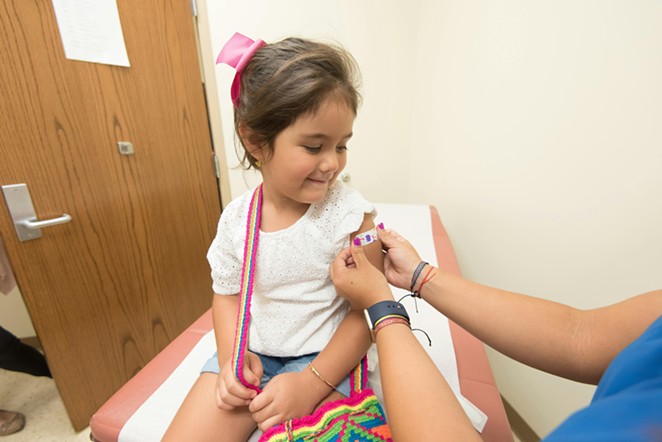With cooling temperatures and the return to school, Melissa Sutton, Oregon Health Authority’s medical director for respiratory viral pathogens, warns that there will soon be an increase in typical respiratory viruses like flu, RSV and COVID-19. But, she said, vaccines can help prevent the worst outcomes.
“RSV is the most common cause of hospitalizations among infants in the United States, with up to 3% of infants under six months of age hospitalized each year,” Sutton said. “Most of these infants have no underlying medical conditions. Similarly, about half of children hospitalized with COVID-19 have no underlying medical conditions. These immunizations act as our best defense against severe disease, which can affect anyone.”
Health officials say they are also concerned by the low vaccination rates for school-age children and the spread of communicable diseases, especially in more rural areas. Measles specifically has been active in Oregon this year with 31 cases reported so far — the most since 1991.
“Oregon has fallen below the 95% threshold for herd immunity in school-age children,” Richard Bruno, M.D., health officer for Multnomah County said. “During the 2023-24 school year, only 91.2% of kindergartners in Oregon were fully vaccinated against measles.”
In Deschutes County, the vaccination rate is even lower, with only 85.8 % of kindergartners in the county completing school-required vaccines. Seventeen schools are considered “most vulnerable” due to vaccination rates under 85% and only a handful meet levels over 95% to be considered “safest” from diseases like pertussis, measles, mumps, diphtheria and more, according to OHA data from the 2023-2024 school year, the most recent year data is available.
State law requires that children in school, preschool or a childcare facility provide proof of immunization against measles, diphtheria, tetanus, pertussis, polio, mumps, rubella, hepatitis A and B and varicella. However, medical and non-medical exemptions are available for philosophical, personal and religious reasons.
Officials stress that the low vaccination rates are especially worrying given the lack of hospital beds available throughout the state.
“Compared with other states, we have among the lowest number of hospital beds per person in the nation,” said Sarah Laiosa, D.O., public health officer for Malheur and Harney counties. “That means that any increase in respiratory diseases can quickly fill our emergency rooms and hospitals, slowing care for all and putting incredible pressure on our dedicated frontline healthcare workers.”
For those wanting to get vaccinated, officials said that newly formulated COVID-19 and flu vaccines are already in some offices and will be widely available in the coming weeks. They recommend that everyone six months and older get the updated vaccine, though people who recently had COVID-19 may wait for a few months, per the U.S. Centers for Disease Control and Prevention.
In a few weeks, RSV vaccines will also be available, though they are limited to infants and some children 8-19 months old who are at an increased risk for severe RSV, pregnant women between 32 and 36 weeks of gestation and adults over 60.
Forecasting the outlook for the respiratory season is difficult, especially with COVID-19 being so new on the scene, but this year it’s particularly murky, according to Sutton.
“We often look at information from the Southern Hemisphere to help us understand what our season might be like in the Northern Hemisphere,” Sutton said. “This year we have a really unclear picture from the Southern Hemisphere. We have a handful of countries who had quite severe seasons, and then we had some countries that had really mild seasons. So we really don't have a clear picture of what we're facing this year.”








